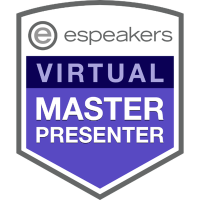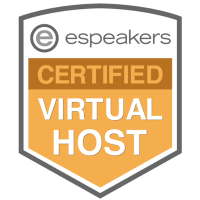|
Make sure the work environment supports the physically challenged. You can find out if your organization meets accessibility standards by visiting the website for the Americans with Disabilities Act (www.ada.gov) and reviewing the design standards (revised in 2010) and other guidelines provided on the site. There are Technical Assistance Materials such as ADA Update: A Primer for Small Business and Revised ADA Requirements. There is also an Information Line that provides assistance with the ADA and how to comply with its guidelines, as well as a video library that includes content such as Ten Employment Myths and Ten Small Business Mistakes.
Next Post: October 3, 2013 – Creating a Climate for Diversity: Tip #8
0 Comments
Formally assess the diversity climate and make changes as needed. The best way to evaluate the diversity climate is to ask employees how they feel about the organization and the environment. Many organizations do this in the form of employee attitude surveys. The most important element of this process is to analyze the results on a demographic basis. In other words, determine how employees from different groups (e.g., age, race, gender, tenure) feel about the organization. For instance, are there significant differences between employees who have been in the organization for 10 years and those who joined in the past 2 years? Do women experience any aspects of the environment differently than men? Do members of underrepresented groups have significantly different opinions than those in the majority? Answers to questions such as these will help you understand the extent to which you have established a culturally inclusive environment.
Next Post: September 30, 2013 – Creating a Climate for Diversity: Tip #7 Ensure that organizational policies and practices support a diverse workforce. For example, many top diversity practitioners reward managers for effective diversity management in the form of bonuses and merit increases. They also recognize the holidays and celebrations of various cultural groups, ensure that the physical environment (such as artwork, posters and other visual displays) reflects an appreciation for diversity, and develop compensation practices that fit the needs of diverse organizational members.
Next Post: September 26, 2013 – Creating a Climate for Diversity: Tip #6 Actively work to recruit a high quality, culturally diverse workforce. This can create a significant competitive advantage for your organization. As a consultant, I have seen many organizations improve their performance and their ability to serve a diverse customer base by proactively focusing on the creation of high quality, culturally diverse candidate pools for their positions. By “enlarging the net” you use to recruit top candidates, and by improving the climate for diversity, you can significantly improve business performance.
Next Post: September 23, 2013 – Creating a Climate for Diversity: Tip #5 Develop, implement and enforce anti-harassment and discrimination policies. In addition to the development of policies, everyone in your organization should receive anti-harassment and anti-discrimination training that emphasizes the specific steps employees can take to reduce problematic behavior. This includes the provision of skills-based training that teaches managers and supervisors to effectively challenge inappropriate comments and actions. It also includes a systematic process for communicating these policies to employees and letting them know what they should do if they feel they are the victim of harassing or discriminatory behavior. Of greatest importance is the creation of a specific process to handle such complaints in a timely and comprehensive fashion.
Next Post: September 19, 2013 – Creating a Climate for Diversity: Tip #4 Help employees develop the skills they need to effectively communicate, resolve conflict and solve problems in culturally diverse environments. Such skills include the ability to communicate across cultural differences, the ability to resolve diversity-based conflict, the ability to provide coaching and mentoring for a diverse range of employees, and the ability to contribute to the creation of culturally empowered environments. Keep in mind that organizational members will not develop these skills overnight. However, with ongoing developmental opportunities and the chance to apply newly developed skills on the job, increased competency levels will become evident, and will have a positive impact on both individual and organizational performance. In addition, by providing continuous opportunities for development, you will demonstrate your commitment to the creation of a culturally inclusive workplace.
Next Post: September 16, 2013 – Creating a Climate for Diversity: Tip #3 Given the diversity in the American workplace and the benefits that accrue from successfully empowering that diversity, it behooves us to create work environments that maximize the likelihood of success for a diverse range of people. Managers, supervisors and employees can help create a climate that empowers diversity by engaging in a variety of proactive behaviors. In coming weeks, I will describe these behaviors starting with Tip #1:
Next Post: September 12, 2013 - Creating a Climate for Diversity: Tip #2 In my last post, I defined empowering diversity as the intentional process of creating culturally empowered environments. There are 3 potential benefits to empowering diversity in your organization: improved individual and organizational performance, enhanced customer service and improved bottom-line.
Improved individual and organizational performance refers to measurable increases in employee productivity and work quality, enhanced team performance, improved organizational processes, and enhanced workforce quality. It also includes an increased ability on the part of the organization to recruit and retain the best human resources available. Enhanced customer service refers to an increased ability to connect with and successfully serve a diverse customer base. This can be reflected in improved sales in multicultural markets, reduced customer complaints, and increased market share. It also applies to internal customers, such as employees, and can be reflected in terms of improved attitude and morale. This is of particular importance in culturally diverse organizations, where there can be vast differences in employee perceptions and satisfaction levels. Finally, improved bottom-line refers to increased revenues, reduced costs, and enhanced organizational value and profitability. This can be reflected in a variety of organizational measures such as increased sales, stock value, and retention (especially among underrepresented group members), reduced cost-per-hire, and decreased turnover. It can also be reflected in a reduction in racial and sexual harassment, and associated legal costs. Next Post: September 9, 2013 – Creating a Climate for Diversity Empowering diversity is the intentional process of creating culturally empowered environments. Such environments recognize the significant benefits of diversity, include members of diverse cultural groups as full participants, act to eliminate all forms of discriminatory behavior, and actively seek to empower all members with the skills and opportunities needed for both individual and organizational success. The primary goal of any diversity empowerment process is the development of culturally inclusive organizations that generate measurable improvements in individual, organizational and community performance. While the creation of culturally empowered environments typically requires a significant amount of effort, this effort is rewarded through the accrual of three benefits: improved individual and organizational performance, enhanced customer service and improved organizational bottom-line. I will discuss these benefits in my next post. Have a great day!
Next Post: September 5, 2013 – The 3 Benefits of Empowering Diversity |
AuthorDr. Tyrone A. Holmes is an author, speaker, coach and consultant. He helps his clients develop the skills needed to communicate, resolve conflict, solve problems and improve performance in diverse organizational settings. Archives
March 2016
Categories
All
|
 RSS Feed
RSS Feed

